With the rising adoption of AI tools, the next buzzword getting much attention is “no-code AI and low-code AI. The term no code explains the entire concept, which requires little to no coding knowledge.
No-code solutions use 70% fewer resources than typical app-building platforms and by 2026, the low-code market is expected to reach a massive $64.5 billion in market capitalization.
But the real question is, are no-code AI tools as reliable, accurate, and precise as software engineers? This article discusses everything you need to know about this next big thing.
What is a No-Code AI?
No-code AI, also known as codeless AI, falls within the scope of the AI landscape, aiming to democratize artificial intelligence. No-code AI denotes the utilization of a no-code development platform with a visual code framework and a drag-and-drop interface for deploying AI and machine learning models.
A broad range of tools offers nocode AI capabilities, including specific nocode AI solutions and specific automation tools (e.g., certain RPA software providers) that integrate AI functions within a nocode user interface.
No-code AI is ideal for non-technical users to promptly classify data, analyze information, and easily construct accurate models for predictive purposes.
When You Should Use No-Code AI?
The possibilities with no-code tools are virtually limitless, too numerous to mention here. However, the following are some instances of what you may create and do with no code:
- Create software features for your company, including job boards, markets, newsletters, client portals, websites, databases, and more
- Create PWAs, web apps, and mobile apps
- Reduce the repetition and simplify work routines
- Test a concept for a tool, website, or app fast and economically before hiring developers (or never hiring developers at all)
- Before starting to learn how to code, use it to gain an understanding of how software functions
Also Read: Unlocking Potential: The Power of AI Software Development
Creating an AI-led SaaS product without coding skills is within reach thanks to the presence of Nocode tools and platforms. Below are the essential steps for developing an AI-based SaaS product.
Initiate by clearly outlining your product concept and highlighting the problem it resolves or the value it offers users.
Conduct deep, comprehensive research to grasp the intricacies of the market, analyze the competitive landscape, and understand the specific demographics your Software as a Service (SaaS) product caters to. This crucial step will refine your concept and pinpoint the essential features and capabilities you wish to integrate.
Choose a no-code platform that best fits your requirements. Opt for a no-code platform that enables you to develop and launch your SaaS product seamlessly without the need for coding. Some popular no-code platforms, like Webflow Carrd, Softr, and Fuzen1, are for building your SaaS products effectively.
Determine the AI/ML-powered features you wish to integrate into your SaaS product by collaborating with a project manager, software architect, and business analysts.
When implementing security and reliability, consider evaluating user authentication, data encryption, cybersecurity practices, scalability, and managing high traffic volumes effectively from the onset.
Build your AI-powered SaaS product by using your chosen no-code platform. Make the most of the platform’s AI capabilities to improve your product’s functionality and enhance the user experience.
Thoroughly examine the product through rigorous testing to validate its alignment with the expected criteria and operational capabilities. Solicit user feedback and engage in iterative improvements to boost its performance and user satisfaction levels.
After finalizing your product, initiate its market launch. Craft a robust marketing plan to showcase your SaaS product and engage users. Use various marketing channels, like social media content marketing and partnerships, to connect with your target audience, ensuring a successful product introduction.
No-Code Vs Low-Code
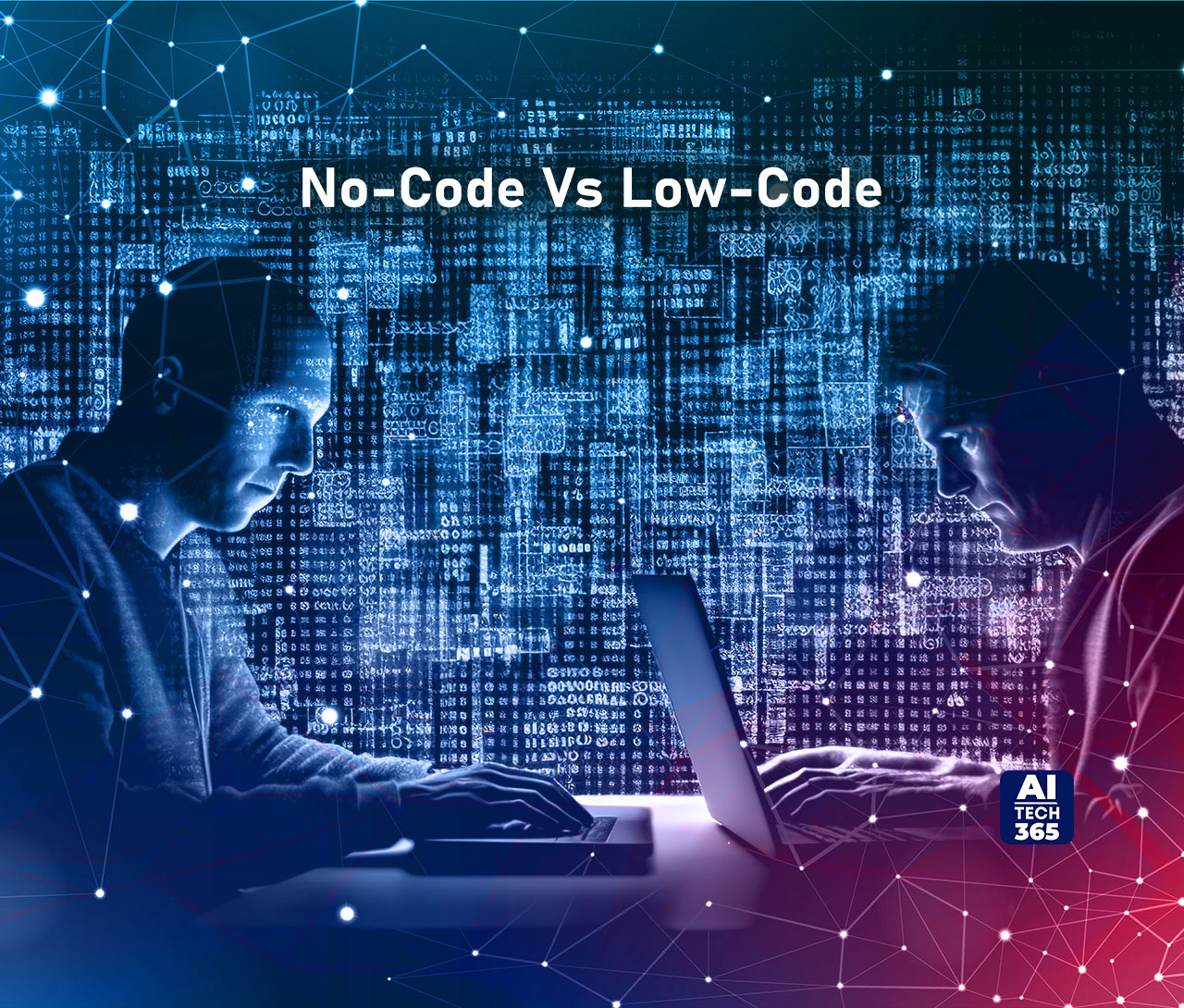 No-Code Platforms:
No-Code Platforms:
- No-code platforms require no coding experience to use and build applications.
- They provide a visual interface and pre-built components that allow users to create customized applications without writing code.
- No-code platforms are typically leveraged by business users who want to address their specific business needs without relying on IT professionals.
- These platforms prioritize ease of use and enable users to create apps quickly and efficiently.
- No-code platforms may have limited extensibility and may not be suitable for complex enterprise-grade use cases.
- They can be a great option for simpler projects and enable cross-departmental collaboration.
Low-Code Platforms:
- Low-code platforms are more adaptable and offer a middle ground between no-code and traditional coding.
- They provide a visual interface with drag-and-drop features and also allow for coding or programming.
- Low-code platforms are often used by IT professionals with coding knowledge to create complex custom applications.
- These platforms offer scalable designs and can handle more complex application requirements.
- Low-code platforms provide open APIs for renewability and implementation flexibility in the cloud or on-premises.
- They can be a good choice for businesses looking to accelerate development and reduce costs while still having the ability to customize their applications.
Benefits of No-Code AI
- The advantages of no-code emphasize simplicity and user-friendliness for non-programmers and include aspects like:Minimal to nonexistent instruction: A no-code app builder’s user interfaces are straightforward and expandable. All you have to do to create an application is drag and drop, or layer, the components. The package might contain templates to aid in creating an appropriate application. The user only sees the app builder component because the development tool takes care of the back-end coding tasks. Users don’t need any coding knowledge; however, they might need some basic instruction.
- Reduced price: Allowing nonprogrammers to add simple features frees up IT staff time for more complex work, such as developing cloud products, mobile apps, or projects with more commercial value. The company saves money and time as a result of this compromise.
- Improved Security: LOB users select what they require from a list of possibilities. This implies that they are less likely to download and utilize unapproved and unsupported tools, which can compromise an organization’s security and be difficult for IT departments to monitor.
Best 5 No-Code AI Tools and Platforms in 2024
DataRobot: DataRobot is a pioneering nocode AI platform, that streamlines the end-to-end journey of developing, deploying, and managing machine learning modes. With its user-friendly interface and a diverse range of automated machine-learning capabilities, it caters to individuals without coding expertise, ensuring accessibility and usability while maintaining a formal and informative tone.

Clarifai AI Platform: Clarifai AI Platform is a no-code tool that provides computer vision and natural language processing capabilities. It allows users to build AI models for tasks such as image recognition, object detection, and sentiment analysis without writing code. The platform offers pre-built models and an intuitive interface for customization.
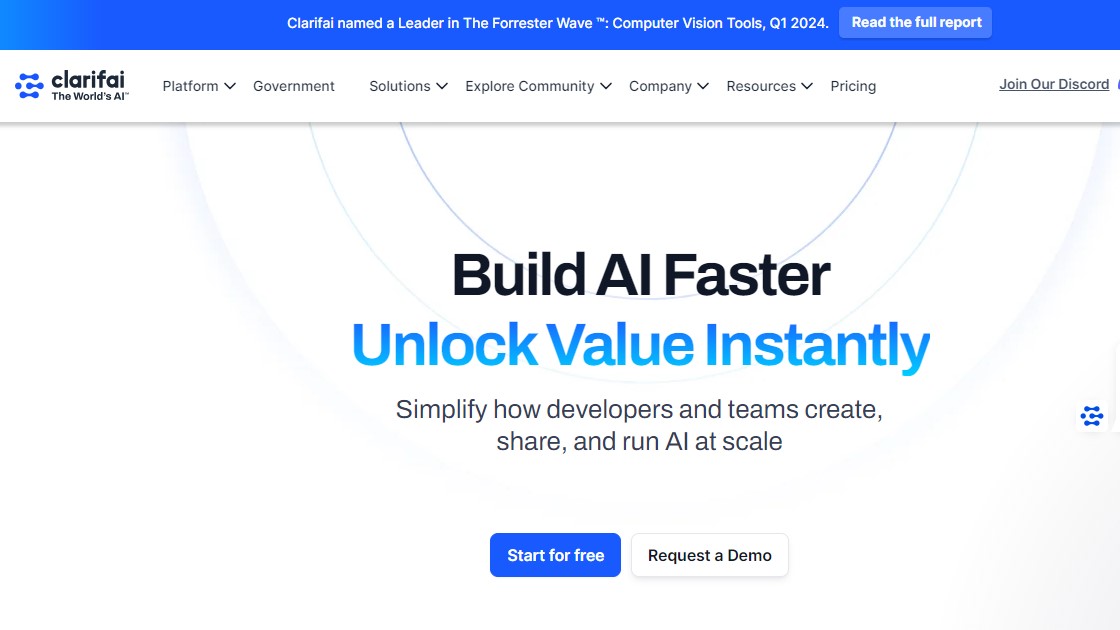
MonkeyLearn: MonkeyLearn is a no-code AI tool focused on text analysis and natural language processing. It enables users to perform tasks like sentiment analysis, text classification, and keyword extraction without coding. MonkeyLearn offers pre-trained models and a visual interface for customization and integration.
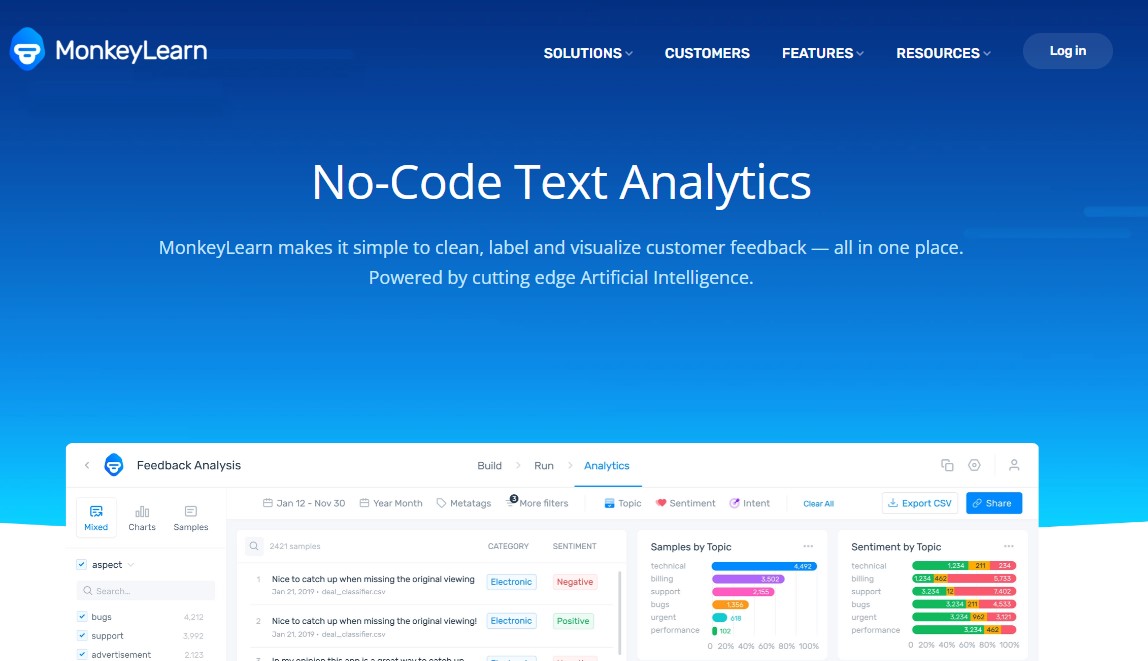
Studio Creatio: Studio Creatio is a no-code platform that combines business process management (BPM) and customer relationship management (CRM) functionalities. While not specifically an AI tool, it allows users to automate and optimize business processes using visual tools and workflows.
MLJAR: MLJAR is a no-code platform for building machine learning models. It offers automated machine-learning capabilities, allowing users to train models without coding. MLJAR supports various algorithms and provides a user-friendly interface for data preprocessing, model training, and evaluation.
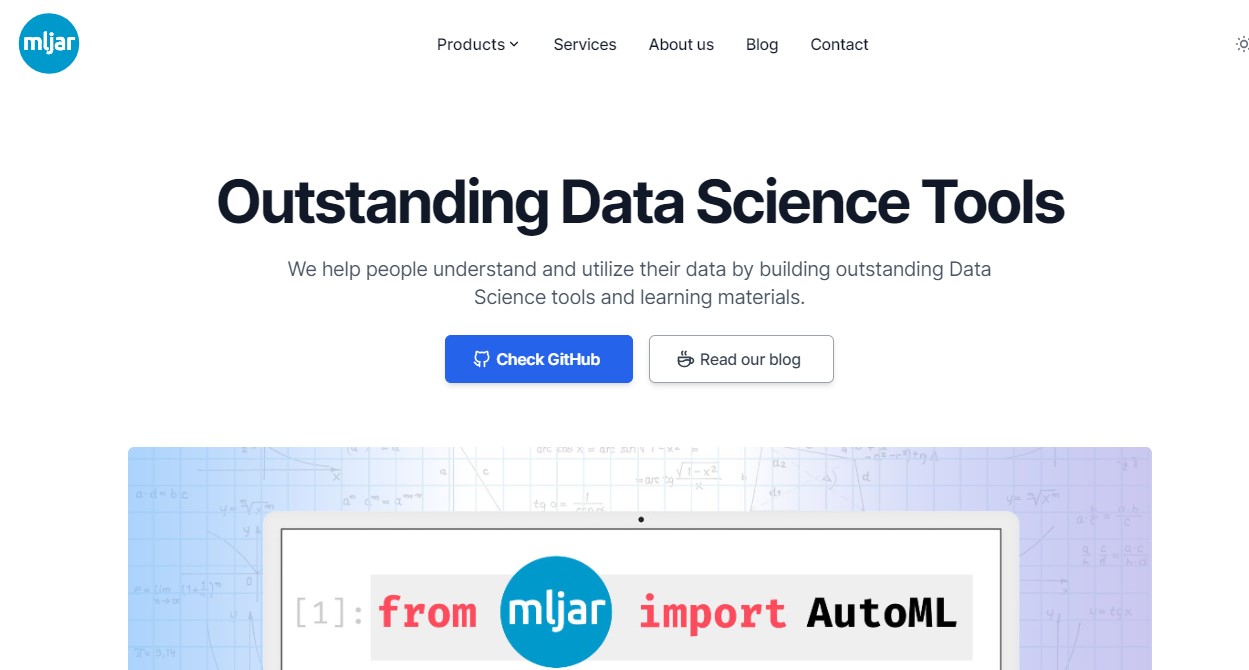
What a No-Code Development Platform Can Help You Build?
Websites and Online Applications: By leveraging a nocode platform, you can craft and customize websites, integrating interactive features like contact forms, e-commerce functionalities, and seamless connectivity with diverse web services.
Management Tools and Database Solutions: No-code platforms empower users to craft and oversee databases and diverse data management instruments such as custom relationship management (CRM) systems and project management tools.
Streamlining Processes With Automation Tools: Using a no-code automation platform to streamline business operations such as handling invoicing and payments feels like having a seamless behind-the-scenes helper manage the nitty-gritty tasks effortlessly for you. It’s your go-to solution for enhancing efficiency and optimizing workflows.
Mobile Applications: Certain no-coding platforms empower users to create native mobile apps for iOS and Android devices without the need for coding.
Essential Social Media Tools: No-code platforms play a pivotal role in constructing tools for the management and marketing of social media. This encompasses functionalities such as scheduling posts and assessing engagement metrics.
The diversity of applications and software solutions that can be created using a no-code platform is solely limited by your imagination and the specific platform capabilities you are employing.
Final Takeaway On No-Code AI
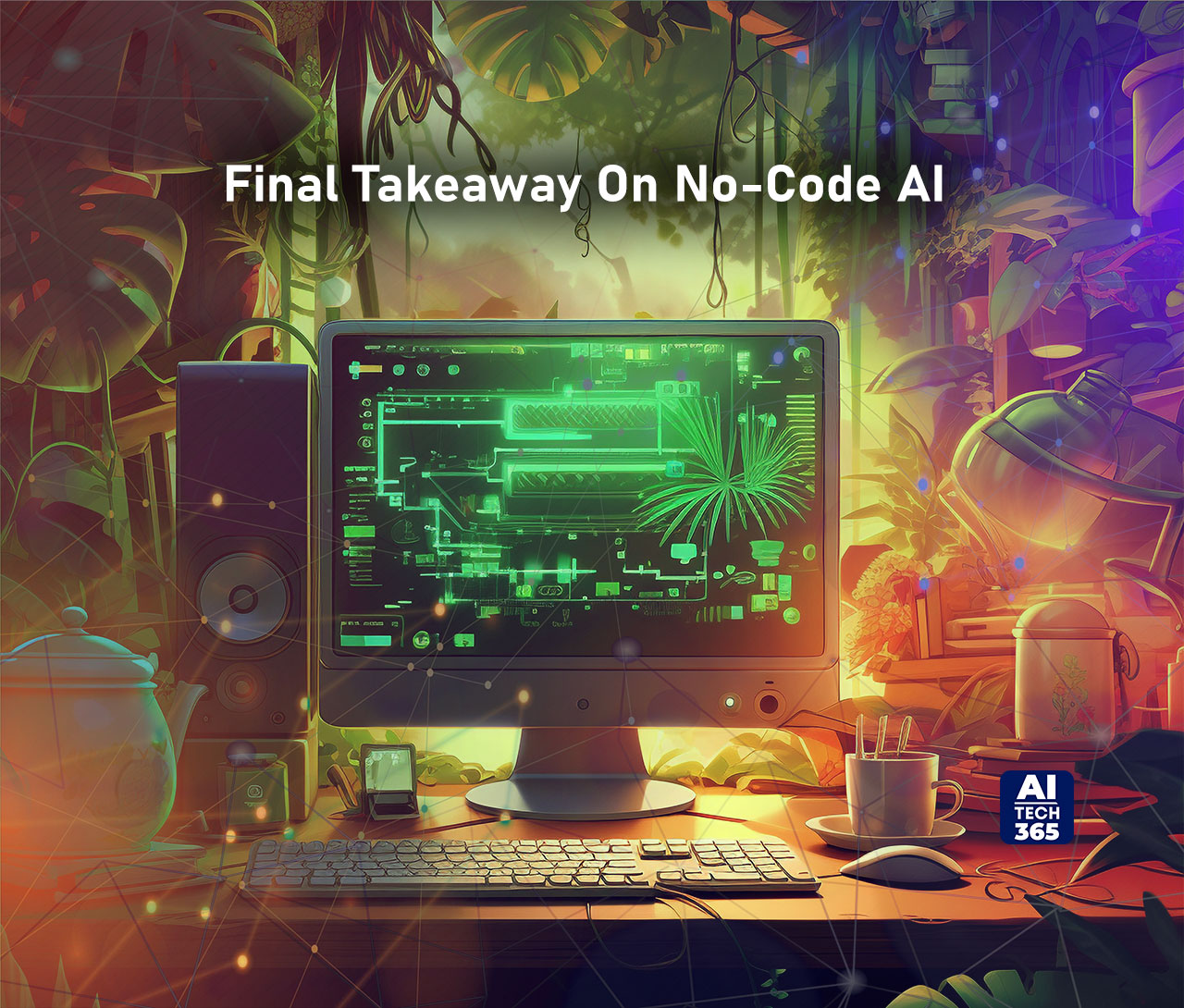 No-code AI tools have transformed the way individuals and businesses approach artificial intelligence. By eliminating the need for extensive coding knowledge, these tools empower users to build, deploy, and automate AI models easily. Furthermore, these platforms provide intuitive interfaces, drag-and-drop functionalities, and pre-built components, enabling non-technical users to harness the power of AI.
No-code AI tools have transformed the way individuals and businesses approach artificial intelligence. By eliminating the need for extensive coding knowledge, these tools empower users to build, deploy, and automate AI models easily. Furthermore, these platforms provide intuitive interfaces, drag-and-drop functionalities, and pre-built components, enabling non-technical users to harness the power of AI.


